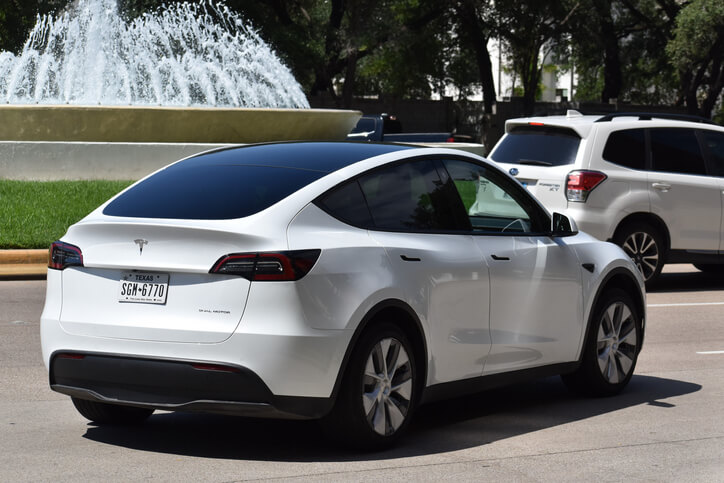In Hybrid and Electrical Mechanic Training? Here’s Everything You Should Know About Tesla’s New Safety Features
The Tesla brand is a leading name in the electric vehicle (EV) industry. For budding hybrid and electric vehicle mechanics, it’s a name you’ll encounter and engage with repeatedly throughout your career.
Tesla’s commitment to innovation and evolution has been well documented, and the brand continues to lead the charge with groundbreaking innovations to enhance driver safety. The latest stride on this journey is a series of new safety features set to redefine the driving experience for Tesla owners. This blog post explores the key aspects of these cutting-edge safety enhancements.
Hazard Light Auto-Activation After Airbag Deployment
A standout feature introduced by Tesla is a hazard light auto-activation following the deployment of airbags. This update, applicable to all US-bound Model 3 and Model Y vehicles and Model S and Model X cars manufactured post-2020, aims to address post-collision visibility concerns.
As you’ll see in hybrid and electrical mechanic training, the hazard lights are automatically activated once the airbags deploy, flashing at an accelerated rate. This alerts other drivers to the incident and enhances visibility, particularly in low-light conditions or during nighttime crashes. Using turn signals as a strobe light adds an extra layer of safety, making the damaged electric vehicle more conspicuous.

Dynamic Brake Lights for Enhanced Braking Visibility
In addition to the hazard light enhancement, Tesla has been actively implementing the ‘Dynamic Brake Lights’ feature. This feature, introduced over the last few years, involves the brake lights flashing rapidly when a driver uses forceful braking at speeds exceeding 50 km/h. If the vehicle comes to a complete stop, the hazard lights continue to flash until the driver resumes acceleration or manually deactivates the hazard lights. This alerts drivers behind the Tesla and provides crucial information about the braking intensity, contributing to overall road safety.

Hybrid and Electrical Mechanic Training Explores Teslas Over-The-Air Updates
The unique approach Tesla takes to vehicle maintenance and enhancements is evident in these safety features. The company’s use of over-the-air (OTA) updates allows for swift and efficient deployment of new features without requiring physical interventions. This dynamic method of addressing safety concerns positions Tesla as a leader in adapting to emerging challenges and consistently refining its electric vehicles’ performance and safety features.
Beyond these recent updates, Tesla has been a pioneer in utilizing software updates to address recalls. The company’s proactive stance on handling recalls through software updates, as highlighted by CEO Elon Musk, challenges traditional recall terminology. This forward-thinking approach minimizes inconvenience for Tesla owners and reflects the brand’s commitment to continuous improvement and customer satisfaction. Tesla’s new safety features mark another milestone in the brand’s relentless pursuit of excellence in automotive technology. These updates, from hazard light auto-activation to dynamic brake lights, showcase Tesla’s dedication to creating safer and more advanced driving experiences for its global community of electric vehicle enthusiasts and anyone who aims to become a hybrid and electric vehicle mechanic.
Are you looking for a world-class auto mechanic school?
Contact ATC Surrey for more information.


